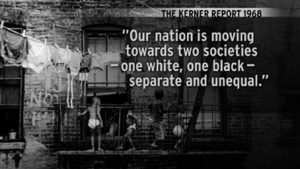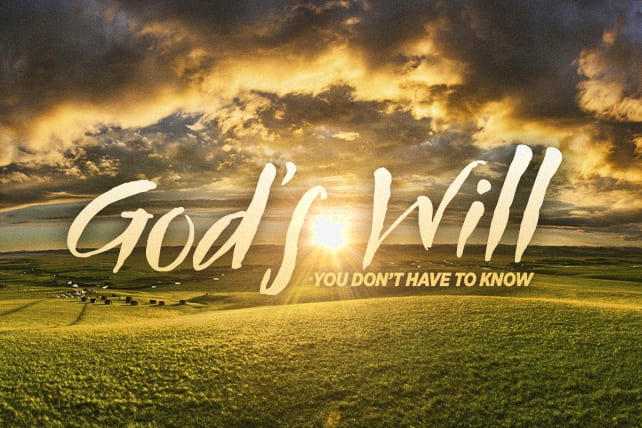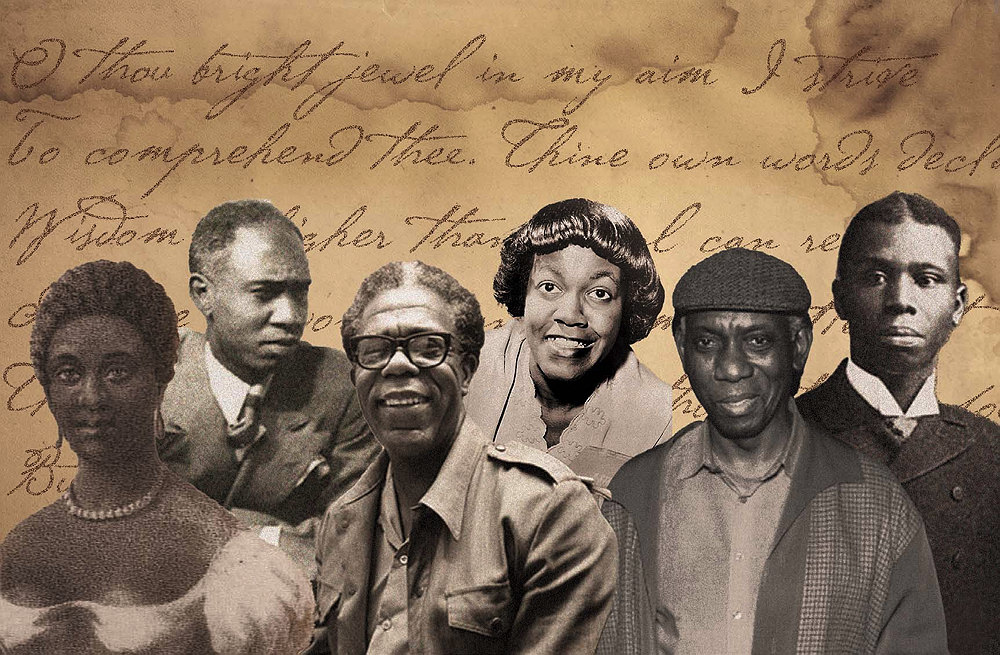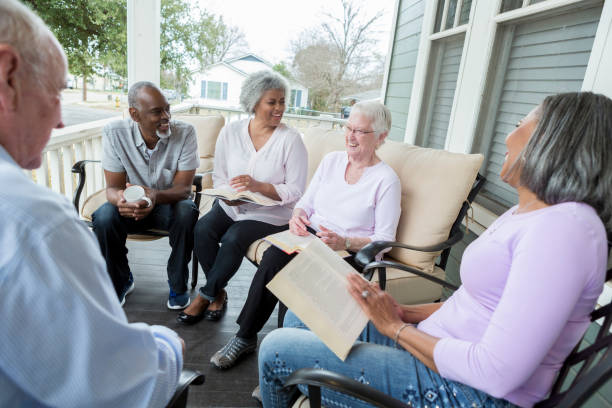(ThyBlackMan.com) What happened? Why did it happen? What can be done to prevent it from happening again and again? Those were the questions posed by President Lyndon Johnson to The National Advisory Commission on Civil Disorders, commonly called the Kerner Commission, which issued its response fifty years ago this month. The year was 1968 and riots, or rebellions as some called them in the black community, had convulsed the United States from coast to coast: Newark to Watts.
Most famously, and presciently, the report said, “Our Nation is moving towards two societies, one black, one white-separate and unequal” and it blamed “white racism” in housing employment and education for much of the problem. Johnson, who had been waging his “war on poverty” through his “Great Society” initiatives was not happy with that diagnosis and, with the assassination of Dr. King a month later, all hell broke loose and the findings and  recommendations of the Commission succumbed to presidential candidate Richard Nixon’s call for “law and order.” Over the past five decades some things have gotten better and some things have gotten worse.
recommendations of the Commission succumbed to presidential candidate Richard Nixon’s call for “law and order.” Over the past five decades some things have gotten better and some things have gotten worse.
What’s Better: The dismantling of the apartheid-state apparatus called Jim Crow was a major achievement of the time. Starting with abolishing school segregation through Brown v. Board of Education in the 1950s, to the civil and voting rights laws of the 1960’s to the fair housing laws of the 1960s and 1970s, the end of legal racial segregation helped to usher in a new era of opportunities for African Americans that has subsequently also helped other “disadvantaged” groups gain equal rights and higher status. To the point where one of the victims of the Parkland, Texas school shooting was buried by his parents in a Dwayne Wade Miami Heat jersey. It may seem inconsequential but not that long ago it was unheard of for non-black kids to look up to black sports heroes. We have seen a number of “firsts” since the end of legal segregation: corporate CEOs, Supreme Court Justices, even a President of the United States, that were unthinkable a generation ago.
What’s Worse: Along with integration, however, came the loss of many black-owned institutions. Where, by necessity, there were black banks, insurance companies and other businesses that relied on the black community for their customers, better capitalized white companies began to siphon off that business. Black owned newspapers suffered a loss of readers and the “Negro” baseball leagues, where many of the future major league stars honed their skills, died. (Incidentally, any white sports figures who are lauded as champions in that time before integration should all have an asterisk by their names as they were not competing against the best competition.)
Probably the most pernicious phenomenon of the post segregation era was/is mass incarceration. The prison-industrial complex provides jobs for white people in rural areas, “guarding” and feeding black people from the nation’s cities. The book “The New Jim Crow” poignantly points out that there are more black people under court jurisdiction now (prison, jail, probation and parole) than there were enslaved before the Civil War. It’s good to see that criminal justice reform has made its way into the public’s consciousness and onto the legislative agenda.
What’s Next: The current political and social narrative is trying to recreate an America that really never was. There was never a time when there was no crime to speak of and the country was a homogenous utopia. Only the names and faces of those blamed for “causing trouble” have changed: Irish and Italians replaced by Latinos and Muslims. Our community now has the monetary and human resources to build and sustain a thriving economy. An eco-system promoting self-sufficiency that can support good jobs, education and housing. We see athletes taking a stand, and putting their money where their mouths are; putting their very careers on the line. We see movie stars fresh from the Oscars talking about “inclusion riders”, where they can leverage their ability to sell a film to get more people of color involved behind the camera as producers, directors cinematographers etc.
Now, for us ordinary citizens, we have to see that our children are just as engaged with academic pursuits as they are with athletics. We run many of the major school districts around the country and there’s no excuse for scandals like the current one in Washington, D.C. where students are graduating from high school after missing over 100 days of classes. We have to curb the gun violence killing young black men that doesn’t get the attention of mass shootings in white communities but that ravage our communities day in and day out. We have to teach out daughters that the path to motherhood is womanhood, not the other way around; and stop babies having babies. Most importantly, we adults have to get more involved where we live. If we let others run the local civic, business and political organizations in our communities, we have no one to blame when items important to us are not front and center on the agenda. If you’re not at the table, you’re on the menu!
Get involved.
Staff Writer; Harry D. Sewell




















Leave a Reply